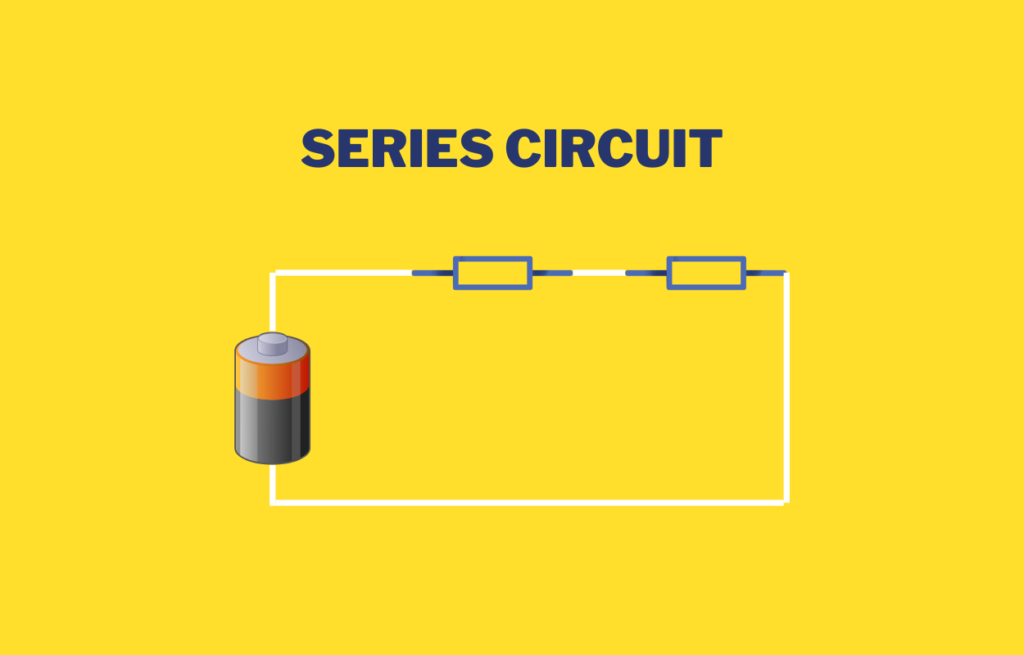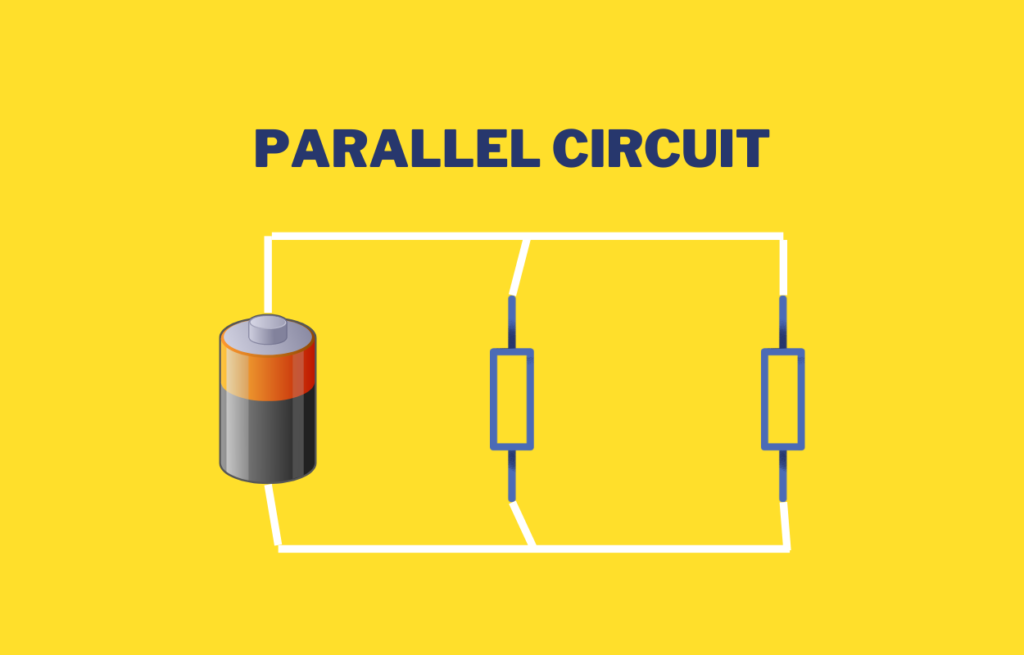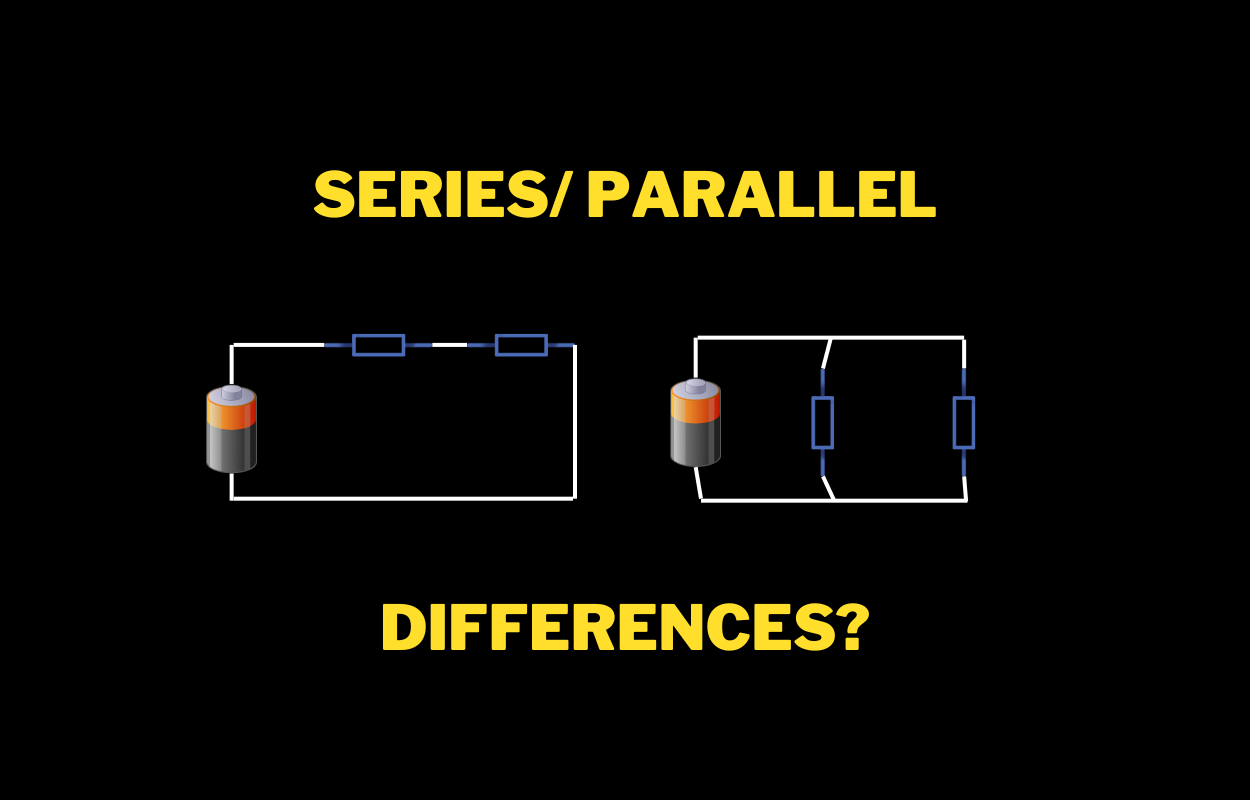The main difference between a series circuit and a parallel circuit is the way the components are connected.
In a series circuit, the components are connected end-to-end, so the current flows through one component and then through the next.
In a parallel circuit, the components are connected side-by-side, so the current can flow through multiple components at the same time.
This results in different behavior of current and voltage in both circuits.
Table of Contents
What is a Series circuit?
A series circuit is an electrical circuit where components are connected in sequence. The current flows through each component and the voltage is divided among them.

The total resistance of the circuit is equal to the sum of the individual resistances. This makes it harder for the current to flow.
If one component fails, the entire circuit will not work. The main advantage is that the voltage can be divided among the components.
Do you know why / how voltage gets divided in series circuit?
What is Parallel Circuit?
A parallel circuit is a type of electrical circuit in which the components are connected side-by-side.
This allows multiple components to be connected to the same voltage source, and for the current to flow through multiple paths at the same time.

The total resistance of the circuit is less than the smallest individual resistance. This means that as the number of components in a parallel circuit increases, the total resistance of the circuit decreases.
This makes it easier for current to flow through the circuit, increasing the overall circuit current.
Do you want to know more about how current divides in the parallel circuit?
Check the Current Division rule
Here is a comparison table of Series and Parallel circuits:
| Series Circuit | Parallel Circuit |
|---|---|
| Components are connected in sequence | Components are connected side-by-side |
| Current flows through each component in turn | Current can flow through multiple components at the same time |
| Voltage is divided among the components | Voltage is the same across all components |
| Total resistance is equal to the sum of individual resistances | Total resistance is less than the smallest individual resistance |
| If one component fails, the entire circuit will not work | If one component fails, the rest of the circuit will still work |
| The current is the same throughout all components | Current is different through all components |
| Voltage is different across each component | Voltage is the same across each component |
| Used to control the amount of voltage applied to each component | Used to split current among multiple paths |
| Not suitable for high-power applications | Suitable for high-power applications |
| Only one path for current to flow | Multiple paths for current to flow |
Difference between Series and Parallel Circuits
Thanks for Visiting and having great Knowledge. Happy to see you again
FAQ related to the Difference Between Series and Parallel Circuits
How are components connected in a series circuit?
In a series circuit, the components are connected end-to-end, so the current flows through one component and then through the next.
How are components connected in a parallel circuit?
In a parallel circuit, the components are connected side-by-side, so the current can flow through multiple components at the same time.
How does the total resistance of the circuit affect the current flow in a series circuit?
In a series circuit, the total resistance of the circuit is equal to the sum of the individual resistances. As the number of components in a series circuit increases, the total resistance of the circuit also increases, making it harder for current to flow.
How does the total resistance of the circuit affect the current flow in a parallel circuit?
In a parallel circuit, the total resistance of the circuit is less than the smallest individual resistance. As the number of components in a parallel circuit increases, the total resistance of the circuit decreases, making it easier for current to flow.
What happens if one component fails in a series circuit?
If one component fails or is disconnected in a series circuit, the entire circuit will not work. This is because the current flowing through the circuit has no other path to follow.
What happens if one component fails in a parallel circuit?
If one component fails or is disconnected in a parallel circuit, the rest of the circuit will still work. This is because the current flowing through the circuit has multiple paths to follow.
What is the main advantage of a series circuit?
The main advantage of a series circuit is that the voltage can be divided among the components. This can be used to control the amount of voltage that is applied to each component.
What is the main advantage of a parallel circuit?
The main advantage of a parallel circuit is that it is suitable for high power applications. It can handle more current than a series circuit and is less likely to overload or burn out.
Can a series circuit be used for high power applications?
No, a series circuit is not suitable for high power applications because it can’t handle as much current as a parallel circuit and is more likely to overload or burn out.
Can a parallel circuit be used to control the amount of voltage applied to each component?
No, a parallel circuit is not used to control the amount of voltage applied to each component. The voltage is the same across all components in a parallel circuit.
Can a series circuit be used to split current among multiple paths?
No, a series circuit is not used to split current among multiple paths. The current flows through one component and then through the next in a series circuit.

